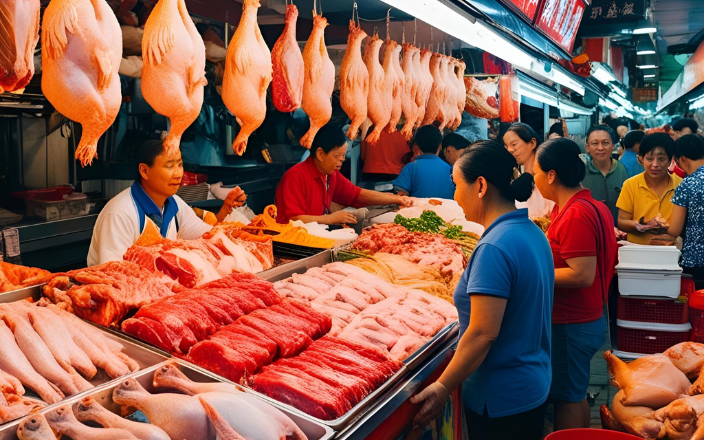The global poultry industry is poised for significant growth in 2025, driven by increasing consumer demand, affordability, and its relatively lower environmental impact compared to other meats. The market is projected to expand from $384.95 billion in 2024 to $410.98 billion in 2025, reflecting a compound annual growth rate (CAGR) of 6.8%. This growth is largely attributed to rising meat consumption, economic development in emerging markets, and increased awareness of poultry’s health benefits.
Asia’s role in poultry meat demand
Asia is expected to be at the forefront of this growth, with the region’s demand for poultry products steadily increasing due to factors such as population growth, rising disposable incomes, changing dietary preferences, and urbanization. The Asia-Pacific poultry meat market is estimated to reach $175.5 billion in 2025, growing at a CAGR of 1.34% during the forecast period. Countries like China, India, and Indonesia are major contributors to this surge, driven by their large populations and increasing per capita consumption of poultry meat.
Factors driving growth in Asia
Several key factors are driving the growth of poultry meat demand in Asia:
- Population growth: The Asia-Pacific region is home to a large and growing population, which is fueling the demand for poultry products.
- Rising disposable incomes: As incomes rise, consumers have more purchasing power, leading to increased consumption of protein-rich foods like poultry.
- Changing dietary preferences: There is a shift towards protein-rich diets, boosting the consumption of poultry meat and eggs.
- Urbanization: The expansion of modern retail channels and urbanization are influencing the distribution and consumption patterns of poultry products.
Technological advancements and industry challenges
Technological advancements in poultry farming and processing techniques are improving productivity and efficiency in the industry. Automated feeding systems, climate-controlled housing, and precision nutrition are some of the innovations enhancing the poultry value chain. However, the industry faces challenges such as avian influenza outbreaks, geopolitical tensions, and supply chain disruptions. Stringent biosecurity measures and effective disease management are crucial to mitigating these risks.
Future outlook
Despite these challenges, the global poultry industry is expected to continue its upward trajectory in 2025, supported by favorable market conditions and evolving consumer preferences. Asia’s leading role in this growth highlights the region’s importance in the global poultry market. As the demand for poultry meat continues to rise, stakeholders must navigate the dynamic landscape effectively to capitalize on the opportunities presented by this thriving industry.
Sources: Available upon request

